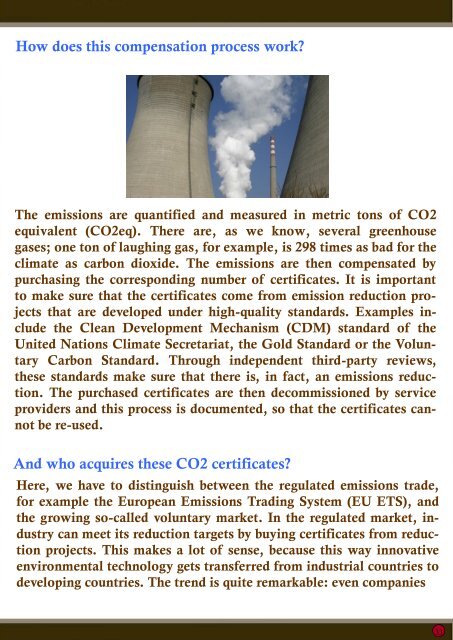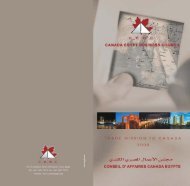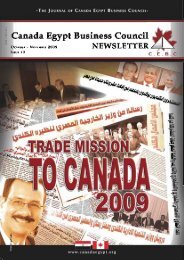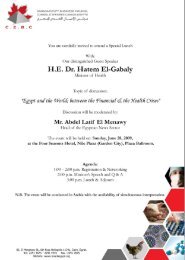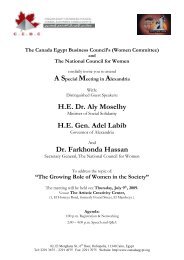June 13 - Canada Egypt Business Council
June 13 - Canada Egypt Business Council
June 13 - Canada Egypt Business Council
You also want an ePaper? Increase the reach of your titles
YUMPU automatically turns print PDFs into web optimized ePapers that Google loves.
How does this compensation process work?<br />
The emissions are quantified and measured in metric tons of CO2<br />
equivalent (CO2eq). There are, as we know, several greenhouse<br />
gases; one ton of laughing gas, for example, is 298 times as bad for the<br />
climate as carbon dioxide. The emissions are then compensated by<br />
purchasing the corresponding number of certificates. It is important<br />
to make sure that the certificates come from emission reduction projects<br />
that are developed under high-quality standards. Examples include<br />
the Clean Development Mechanism (CDM) standard of the<br />
United Nations Climate Secretariat, the Gold Standard or the Voluntary<br />
Carbon Standard. Through independent third-party reviews,<br />
these standards make sure that there is, in fact, an emissions reduction.<br />
The purchased certificates are then decommissioned by service<br />
providers and this process is documented, so that the certificates cannot<br />
be re-used.<br />
And who acquires these CO2 certificates?<br />
Here, we have to distinguish between the regulated emissions trade,<br />
for example the European Emissions Trading System (EU ETS), and<br />
the growing so-called voluntary market. In the regulated market, industry<br />
can meet its reduction targets by buying certificates from reduction<br />
projects. This makes a lot of sense, because this way innovative<br />
environmental technology gets transferred from industrial countries to<br />
developing countries. The trend is quite remarkable: even companies<br />
33


